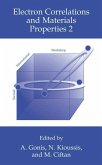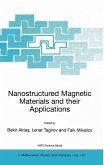This monograph is for the physicist, engineer, material scientist and graduate student concerned with solids (and fluids) at low temperatures. The authors, respectively a theorist and an experimentalist with many years of cryogenic experience, have collaborated to cover the closely related areas of heat capacity, thermal expansion and elastic stiffness. They include chapters on the fundamental principles, the observed behavior of representative materials - cubic crystals, anisotropic solids, glasses, polymers, magnetic materials, superconductors, composites, etc., measurement techniques and tables of data on technical and reference materials.
The birth of this monograph is partly due to the persistent efforts of the General Editor, Dr. Klaus Timmerhaus, to persuade the authors that they encapsulate their forty or fifty years of struggle with the thermal properties of materials into a book before they either expired or became totally senile. We recognize his wisdom in wanting a monograph which includes the closely linked properties of heat capacity and thermal expansion, to which we have added a little 'cement' in the form of elastic moduli. There seems to be a dearth of practitioners in these areas, particularly among physics postgraduate students, sometimes temporarily alleviated when a new generation of exciting materials are found, be they heavy fermion compounds, high temperature superconductors, or fullerenes. And yet the needs of the space industry, telecommunications, energy conservation, astronomy, medical imaging, etc. , place demands for more data and understanding of these properties for all classes of materials - metals, polymers, glasses, ceramics, and mixtures thereof. There have been many useful books, including Specific Heats at Low Tempera tures by E. S. Raja Gopal (1966) in this Plenum Cryogenic Monograph Series, but few if any that covered these related topics in one book in a fashion designed to help the cryogenic engineer and cryophysicist. We hope that the introductory chapter will widen the horizons of many without a solid state background but with a general interest in physics and materials.
Hinweis: Dieser Artikel kann nur an eine deutsche Lieferadresse ausgeliefert werden.
The birth of this monograph is partly due to the persistent efforts of the General Editor, Dr. Klaus Timmerhaus, to persuade the authors that they encapsulate their forty or fifty years of struggle with the thermal properties of materials into a book before they either expired or became totally senile. We recognize his wisdom in wanting a monograph which includes the closely linked properties of heat capacity and thermal expansion, to which we have added a little 'cement' in the form of elastic moduli. There seems to be a dearth of practitioners in these areas, particularly among physics postgraduate students, sometimes temporarily alleviated when a new generation of exciting materials are found, be they heavy fermion compounds, high temperature superconductors, or fullerenes. And yet the needs of the space industry, telecommunications, energy conservation, astronomy, medical imaging, etc. , place demands for more data and understanding of these properties for all classes of materials - metals, polymers, glasses, ceramics, and mixtures thereof. There have been many useful books, including Specific Heats at Low Tempera tures by E. S. Raja Gopal (1966) in this Plenum Cryogenic Monograph Series, but few if any that covered these related topics in one book in a fashion designed to help the cryogenic engineer and cryophysicist. We hope that the introductory chapter will widen the horizons of many without a solid state background but with a general interest in physics and materials.
Hinweis: Dieser Artikel kann nur an eine deutsche Lieferadresse ausgeliefert werden.








